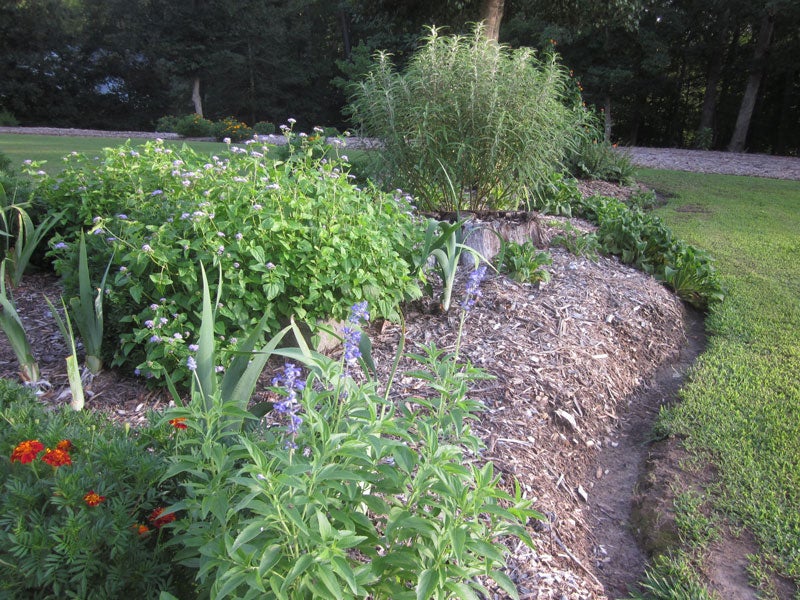Wildlife can give dead trees another life
Published 12:04 pm Thursday, September 3, 2020

- If looking for an alternative to expensive, quickly disappearing landscape mulch, try wood chips. Chips provide landscape artwork for shrub beds and curvaceous tree lines to suppress weeds, retain moisture and add vital nutrients. -- Submitted Kristi Hendricks
|
Getting your Trinity Audio player ready...
|
By Kristi Hendricks
Master Gardener
Stumped whether to take down the tree that died last winter or grind out the resulting remnant remaining in your landscape? Well, if that dead tree isn’t threatening your house or your neighbors’, leave the snag standing. If the stump isn’t blocking your driveway or causing too much trouble while mowing, let it be. We all are saddened to see the passing of a living tree, but here’s why there is value in keeping stumps and snags around.
Dead trees, whether standing or fallen as logs, and stumps are important resources for wildlife. They provide protective shelter, nutritious food and cozy nesting sites for wildlife species that depend on their presence. Cavities in dead trees and stumps entice wildlife to your habitat by offering free room and board.
The eastern bluebird, hoot owl and black-capped chickadee all enjoy the shelter that these naturally hollowed-out spaces provide. Chipmunks and raccoons also use dead tree cavities for nesting. And these spaces provide rapid access for a whole host of lizards, turtles and skinks.
A dead tree quickly becomes infested with fungi and insects. As it slowly decomposes, nutrients are recycled into the soil creating favorable conditions for the accelerated growth of a replacement tree. Attaching a bat house to a dead tree doesn’t cause the home gardener expense or worry as the screws bite into deadwood rather than exposing heartwood of their favorite live tree.
Practical uses for stumps are just as numerous. Elevate your favorite decorative pot above neighboring plantings by placing the container on a stump. Allow the surrounding plants to mostly obscure the view of the decaying wood. This is a great way to highlight your favorite flowering centerpiece.
Or make a stump planter by scooping out the rotten center wood and backfilling with plants of differing heights (uprights, fillers and trailers) and flowers and foliage of contrasting colors and textures. As the stump decays, the soil is enriched and moisture retained. Droppings from wood beetles augment the compost and their tunneling activity breaks up compaction.
View wildlife enjoying a sweet sip of rainwater held captive in a topside cavity. Watch a squirrel perch atop a stump to work the fleshy hull of a hickory nut to get to the meat. Entice birds by placing a tray of water for them to bath after snacking on the various insects lurking beneath the decomposing bark.
If looking for an alternative to expensive, quickly disappearing landscape mulch, try wood chips. Chips provide landscape artwork for shrub beds and curvaceous tree lines to suppress weeds, retain moisture and add vital nutrients.
See website getchipdrop.com or your customary arborist for often free deliveries of chips to your habitat instead of the landfill.





